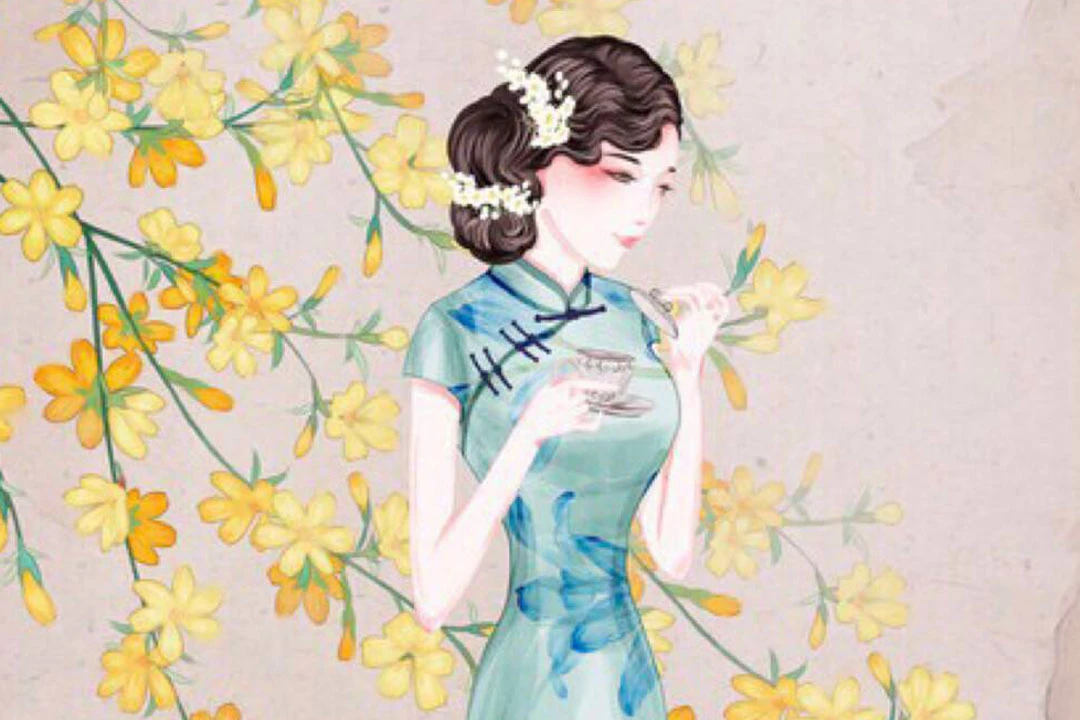The mandarin collar, also known as the Chinese collar or stand collar, is a distinctive and elegant style that has graced garments for centuries. Originating in ancient China, this collar design has transcended cultural boundaries, weaving its way into fashion houses and wardrobes across the globe. With its unique upright stance and minimalist aesthetic, the mandarin collar effortlessly blends tradition with modernity, making it a timeless sartorial statement.
The mandarin collar finds its roots in the traditional dress of the Manchu ruling class of China’s Qing Dynasty (1644-1912). During this era, the collar was a symbol of status and authority, reserved for high-ranking officials and members of the imperial court. The name “mandarin” itself derives from the Sanskrit word “mantrin,” meaning “counselor” or “minister,” reflecting the esteemed position of those who donned this distinctive collar.
Beyond its association with power and prestige, the mandarin collar also carried practical benefits. Its upright design provided warmth and protection for the neck, making it well-suited for the cooler climates of northern China. Additionally, the collar’s simple yet elegant lines embodied the principles of Confucian philosophy, which valued modesty, propriety, and understated elegance.
Fashion Evolution and Adaptations
As fashion evolved and cultural exchange flourished, the mandarin collar transcended its traditional Chinese roots and found its way into Western wardrobes. In the early 20th century, designers and fashion houses embraced the unique aesthetic of the mandarin collar, incorporating it into a variety of garments, from suits and dresses to blouses and jackets.
One of the earliest and most influential proponents of the mandarin collar in Western fashion was the legendary designer Paul Poiret. Known for his innovative and unconventional designs, Poiret introduced the mandarin collar to his collections in the early 1900s, creating a sensation and inspiring a new wave of Eastern-influenced fashion.
Throughout the decades, the mandarin collar has been reimagined and reinterpreted by countless designers, each adding their unique twist to this timeless style. From the tailored elegance of Yves Saint Laurent’s iconic “Le Smoking” tuxedo suit to the whimsical and playful interpretations of Vivienne Westwood, the mandarin collar has proven its versatility and enduring appeal.

Contemporary Appeal and Versatility
In contemporary fashion, the mandarin collar remains a beloved and sought-after design element, celebrated for its ability to elevate any ensemble with a touch of sophistication and individuality. From formal wear to casual streetwear, the mandarin collar has found its place across a diverse range of styles and occasions.
High-end fashion houses continue to showcase their mastery of the mandarin collar, with designers like Alexander McQueen and Dries Van Noten incorporating it into their collections. Meanwhile, streetwear brands and fast fashion retailers have also embraced the trend, offering affordable and accessible mandarin collar options for fashion enthusiasts of all backgrounds.
Beyond its sartorial appeal, the mandarin collar has also become a symbol of cultural pride and identity. For many individuals of Chinese descent, donning a garment with a mandarin collar is a way to pay homage to their heritage and celebrate their cultural roots. This fusion of fashion and cultural identity has contributed to the enduring popularity of the mandarin collar, transcending trends and ensuring its place in the ever-evolving fashion landscape.
Styling the Mandarin Collar
The versatility of the mandarin collar lies in its ability to complement a wide range of styles and outfit combinations. For a polished and sophisticated look, pair a mandarin collar blouse or shirt with tailored trousers or a pencil skirt. This ensemble exudes confidence and elegance, making it perfect for the office or formal occasions.
For a more casual and relaxed vibe, try a mandarin collar t-shirt or sweater with jeans or chinos. This effortless pairing combines the refinement of the collar with the comfort of everyday wear, creating a stylish yet understated look.
Adventurous fashionistas can experiment with layering pieces featuring mandarin collars, such as a collared dress worn over a contrasting mandarin collar shirt. This unconventional combination adds depth and visual interest to an outfit, showcasing a bold and daring sense of style.
Accessorizing is key when it comes to enhancing the allure of a mandarin collar ensemble. Statement necklaces or bold earrings can draw attention to the neckline, while a sleek clutch or structured handbag can complement the clean lines of the collar. For a touch of edge, consider pairing a mandarin collar piece with leather accents or edgy footwear.
Cultural Significance and Preservation
Beyond its fashion relevance, the mandarin collar holds deep cultural significance, particularly in Asian communities. In China, traditional garments featuring the mandarin collar, such as the tang suit or the qipao, are still worn during special occasions and celebrations, serving as a tangible link to the country’s rich heritage.
Efforts are underway to preserve and promote the traditional craftsmanship and techniques involved in creating garments with mandarin collars. Organizations and artisans are working to ensure that these time-honored skills are passed down to future generations, keeping this aspect of cultural heritage alive.
In recent years, there has also been a resurgence of interest in traditional Chinese dress among younger generations, both within China and in diaspora communities worldwide. The mandarin collar has become a symbol of cultural pride and identity, with individuals embracing this distinctive style as a way to connect with their roots and celebrate their heritage in a modern context.
As the fashion world continues to evolve, the mandarin collar remains a timeless and enduring design element, seamlessly blending tradition with contemporary trends. Its ability to transcend cultural boundaries and inspire diverse interpretations ensures that this iconic collar style will continue to grace runways, red carpets, and wardrobes for generations to come.

